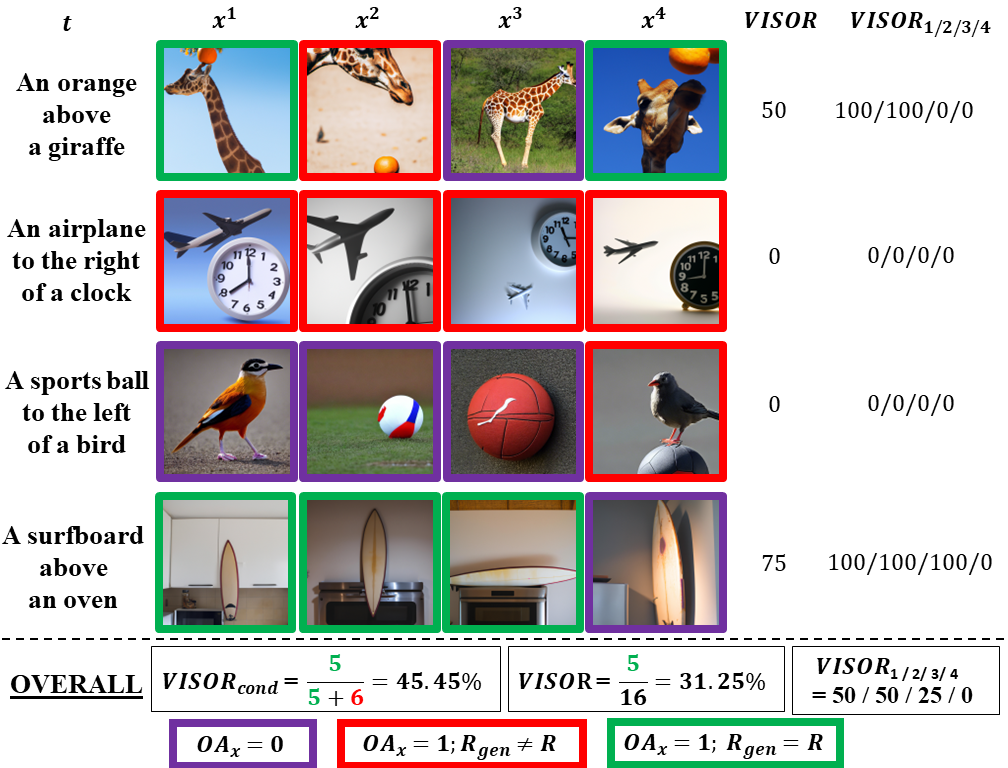Benchmarking Spatial Relationships in Text-to-Image Generation
Spatial understanding is a fundamental aspect of computer vision and integral for human-level reasoning about images, making it an important component for grounded language understanding. While recent text-to-image synthesis (T2I) models have shown unprecedented improvements in photorealism, it is unclear whether they have reliable spatial understanding capabilities. We investigate the ability of T2I models to generate correct spatial relationships among objects and present VISOR, an evaluation metric that captures how accurately the spatial relationship described in text is generated in the image. To benchmark existing models, we introduce a dataset, $\mathrm{SR}_{2D}$, that contains sentences describing two or more objects and the spatial relationships between them. We construct an automated evaluation pipeline to recognize objects and their spatial relationships, and employ it in a large-scale evaluation of T2I models. Our experiments reveal a surprising finding that, although state-of-the-art T2I models exhibit high image quality, they are severely limited in their ability to generate multiple objects or the specified spatial relations between them. Our analyses demonstrate several biases and artifacts of T2I models such as the difficulty with generating multiple objects, a bias towards generating the first object mentioned, spatially inconsistent outputs for equivalent relationships, and a correlation between object co-occurrence and spatial understanding capabilities. We conduct a human study that shows the alignment between VISOR and human judgement about spatial understanding. We offer the $\mathrm{SR}_{2D}$ dataset and the VISOR metric to the community in support of T2I reasoning research.
PDF Abstract




 MS COCO
MS COCO